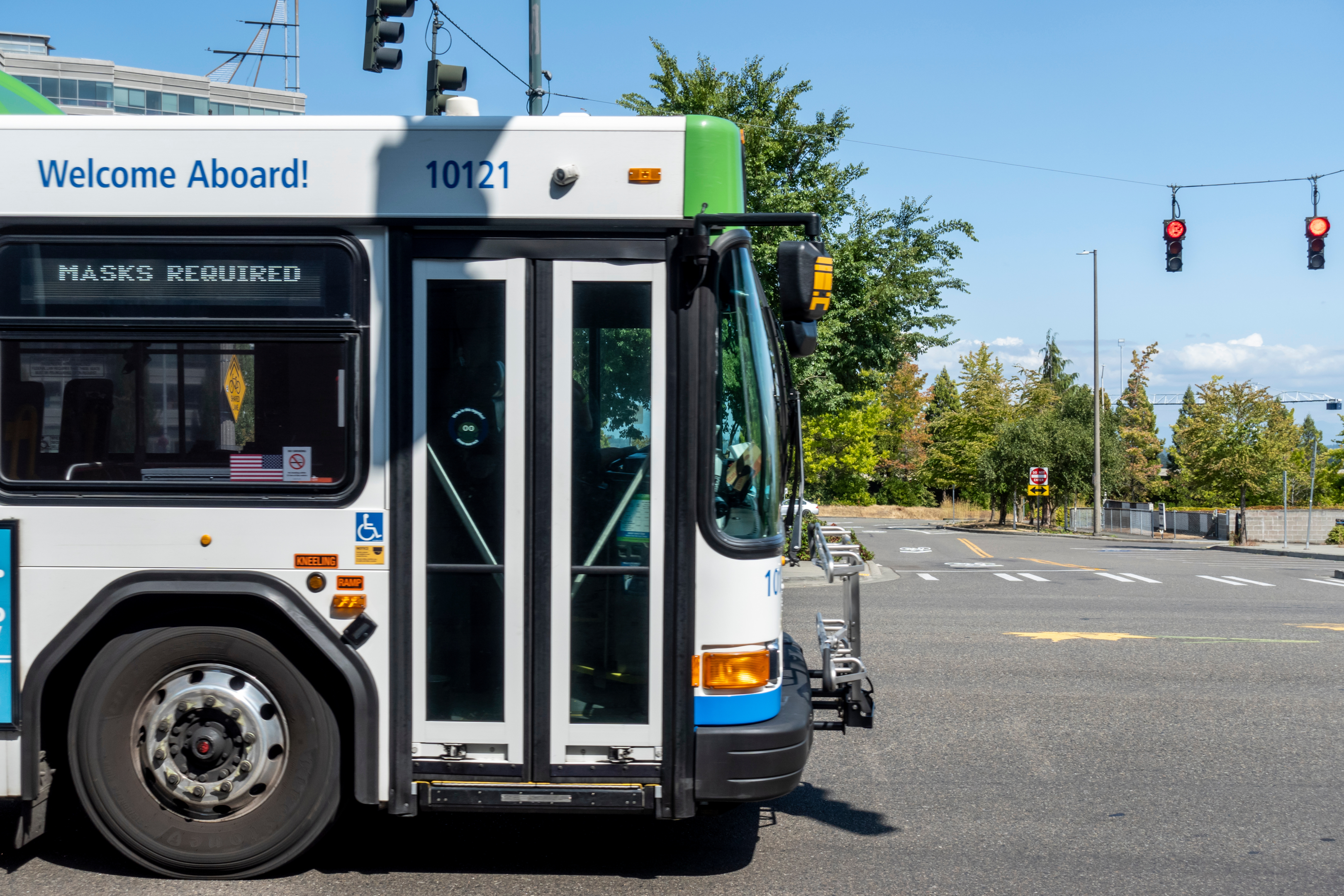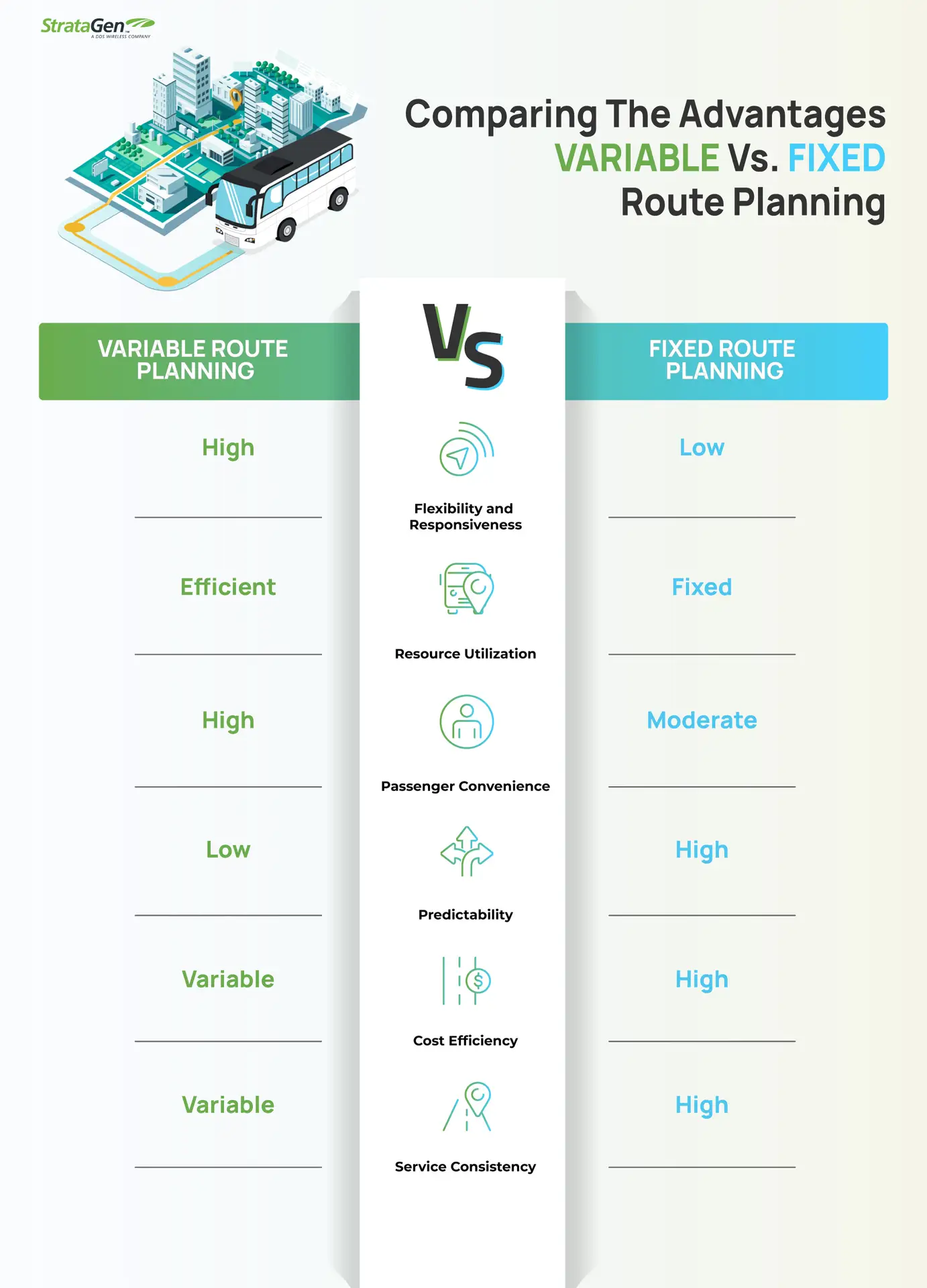January 31, 2024
Route scheduling, also known as route optimization, refers to the process of planning transport routes within a paratransit service area to ensure timely deliveries. It involves determining the best ordering of stops based on numerous factors like delivery date, distance, traffic conditions, and driver availability. A planned route schedule ensures maximal capacity utilization and enhanced delivery efficiency, leading to reduced transport costs through optimized routes.

Optimizing paratransit routes through technology involves collecting passenger data, using specialized software to plan routes considering factors like preferences and traffic, and deploying algorithms to allocate trips efficiently. Real-time updates allow for dynamic adjustments, while fleet drivers receive route instructions and synchronized tasks via mobile devices – in some cases drivers will have permission to edit their routes manually. Continuous performance evaluation informs ongoing improvements to ensure efficient transportation for passengers with diverse needs.
It’s no surprise that efficient route planning is essentially the cornerstone of paratransit services, crucial for ensuring passengers with diverse mobility needs can access transportation seamlessly.
Now that we understand what and how routing planning works, we’ll dissect the critical difference between variable and fixed route services in the paratransit industry, focusing on accessible mobility, paratransit, para-transport, dial-a-ride, scheduled fixed route buses, and para-transportation. We’ll explore the merits of each approach and offer a visual aid with a chart to empower informed decision-making in your paratransit service operations, leveraging insights from a Transportation Management System (TMS).

Variable route planning in paratransit allows for flexibility and responsiveness to paratransit passengers’ requests to ensure timely delivery, to door-service and other service area destinations. Here’s how it works and the advantages it offers:
Variable route planning represents a groundbreaking paradigm in transportation logistics, tailored to meet the ever-evolving demands of passengers, including those with unique accessibility needs. This pioneering system seamlessly integrates real-time scheduling with the agility to swiftly adapt routes on the fly.
By embracing variable route planning, transportation systems transcend traditional constraints, ensuring that passengers of all abilities experience optimal convenience and adaptability throughout their journey. Flexible scheduling, rerouting options, and contingency plans are essential for maintaining optimal resource utilization even in unpredictable situations.
It allows for efficient allocation of vehicles by leveraging technology solutions such as GPS tracking, fleet management software, and predictive analytics to gather real-time data and insights for making informed decisions.
Utilizing advanced algorithms and real-time data analysis to dynamically allocate vehicles and plan routes based on current demand, traffic conditions, and other relevant factors ensures that each ride is optimized for capacity and cost-effectiveness, deploying vehicles where and when they are needed most while minimizing idle time and unnecessary travel reducing wait times and fuel efficiency.

Passenger Customer Experience
Passengers and customers alike appreciate the convenience and responsiveness of variable route planning, making it a preferred choice for many, especially those relying on paratransit, para transport, dial-a-ride, and scheduled bus services. By tailoring routes dynamically to accommodate factors such as traffic conditions, weather, and passenger demand, transportation providers can optimize journeys to minimize delays and enhance overall satisfaction.
This adaptability not only improves the efficiency of the transportation system by reducing travel time and congestion but also ensures reliability by promptly addressing disruptions through real-time traffic information such as accidents, or road closures, thus fostering trust and confidence among passengers. This increases trust and reliability for the transit agency and overall customer satisfaction.
Regarding one method of variable route services, some paratransit agencies now subsidize private taxis or ride-hailing trips as alternatives. For example, Solano County, California, replaced Solano Paratransit with a program offering $100 taxi vouchers for $15, reducing costs by 81%. In 2015, the Massachusetts Bay Transportation Authority piloted subsidizing Uber and Lyft rides for paratransit services.

Fixed route planning, on the other hand, involves pre-determined routes and schedules. Here’s how it works and the advantages it offers:
Fixed routes provide passengers, including those with specific mobility needs, with predictable schedules, making it easier for them to plan their trips. The predictability of fixed route planning in paratransit hinges on multiple factors, including scheduling, rider demand, and operational flexibility. Additionally, accurately gauging rider demand is crucial, as fluctuations in usage, such as during peak hours or special events, can affect the reliability of fixed routes.
While paratransit services offer flexibility to accommodate individuals with mobility challenges, this adaptability may introduce unpredictability or unforeseen circumstances into the planning process. By offering timely updates on schedule changes or delays, paratransit providers can enhance predictability and ensure a smoother experience for riders reliant on fixed route services.

By adhering to set routes, fixed route planning can result in cost savings through reduced fuel consumption and maintenance. Additionally, fixed routes enable the consolidation of passenger trips, allowing multiple individuals with similar origins and destinations to share a ride.
This ridesharing aspect not only enhances cost-efficiency by reducing the number of vehicles needed but also decreases overall travel time for passengers by minimizing detours and unnecessary stops. This fixed route planning helps paratransit agencies to operate far more efficiently through predictable long-term budgeting and forecasting planning.
Customers with paratransit eligibility, particularly those dependent on accessible mobility services, know where and when to catch their ride, providing a consistent and dependable service, whether using paratransit, para transport, dial-a-ride, or scheduled buses.
Fixed routes provide a consistent and reliable service for passengers, which can lead to increased ridership and revenue generation over time. This steady stream of income allows paratransit services to invest in infrastructure improvements and service enhancements, further improving route efficiency and cost efficiency in the long run.
To illustrate the advantages of each approach, here’s a visual chart that highlights the key differences:

Industry experts emphasize the integration of technology into both fixed and variable route paratransit services to improve efficiency and accessibility, while also highlighting the importance of equitable access and sustainability.
Demand-responsive services are gaining traction for their flexibility but require careful planning. Collaborative efforts among transit agencies, governments, and advocacy groups are seen as crucial for designing user-centered services that prioritize the needs of individuals with disabilities, alongside exploring innovative funding mechanisms to ensure long-term viability.
In the world of paratransit, one key to success is choosing the right dispatch system to ensure that the right service reaches the right person on time. We believe in using both variable and fixed route planning, supported by advanced dispatch systems, to balance flexibility and predictability.
Through the use of advanced technology and data insights, we help paratransit companies plan routes and allocate resources efficiently, creating a service that’s both flexible and reliable. This approach ensures safe, empowering transportation for passengers with diverse needs, including accessible mobility, in paratransit, para transport, dial-a-ride, and scheduled buses. Our dedication to innovation ensures that paratransit organizations can adapt to changing passenger needs and continue to offer reliable services. Learn more about ADEPT IQ.
Get your free demo now and see how our SaaS platforms will optimize your transportation organization.
Subscribe to our newsletter
2023. All rights reserved. DDS Wireless Inc.